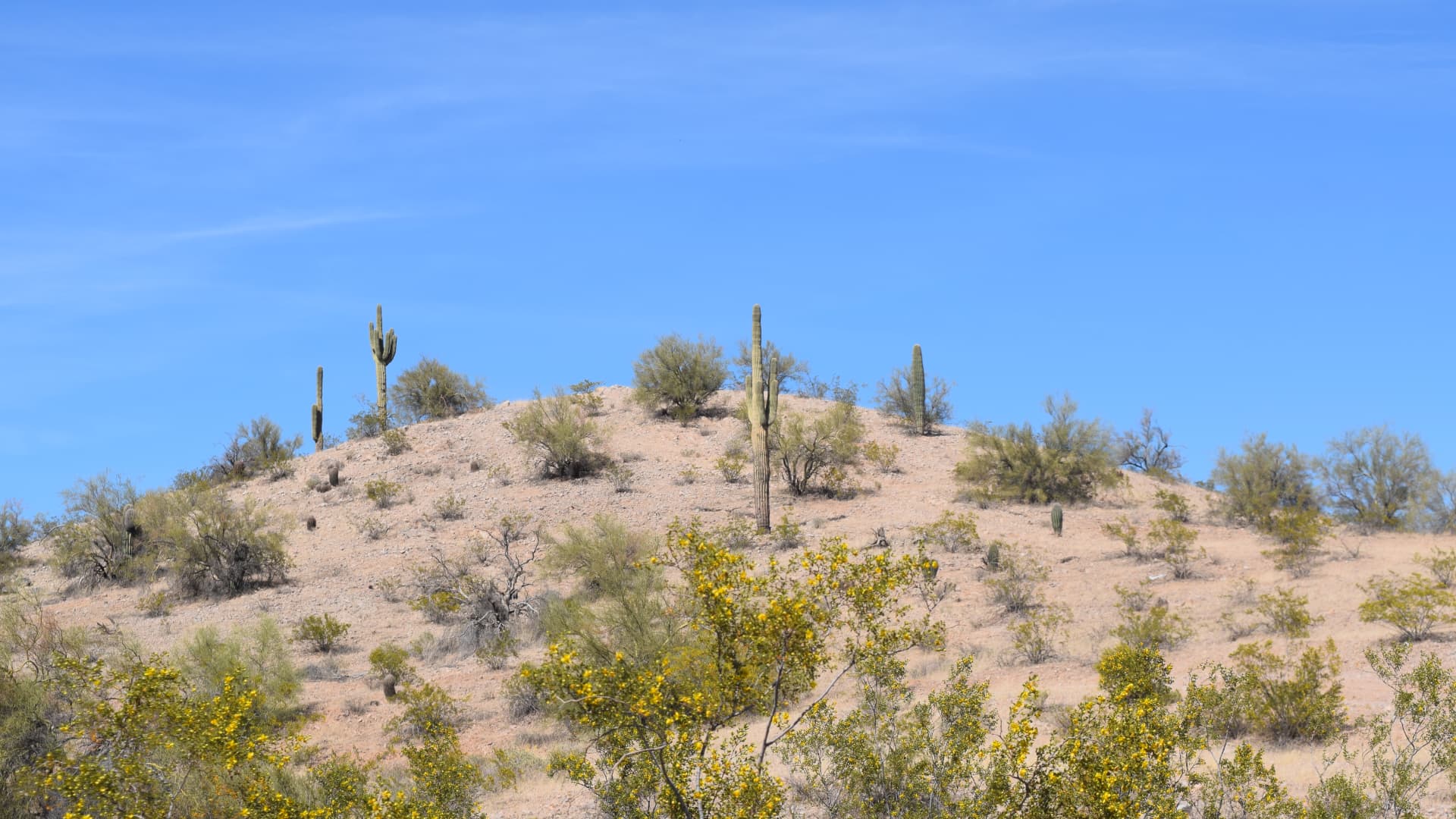
- On the drought-stricken land where Pinal County farmers have irrigated crops for thousands of years, Nancy Caywood stopped her pickup truck along an empty canal and pointed to a field of dead alfalfa.
- "It's heart wrenching," said Caywood, a third-generation farmer who manages 247 acres an hour outside of Phoenix.
- An intensifying drought and declining reservoir levels across the Western U.S. prompted the first-ever cuts to Arizona farmers' water supply from the Colorado River.
CASA GRANDE, Ariz. — On the drought-stricken land where Pinal County farmers have irrigated crops for thousands of years, Nancy Caywood stopped her pickup truck along an empty canal and pointed to a field of dead alfalfa.
"It's heart wrenching," said Caywood, a third-generation farmer who manages 247 acres of property an hour outside of Phoenix. "My mom and dad toiled the land for so many years, and now we might have to give it up."
Farming in the desert has always been a challenge for Arizona's farmers, who grow water-intensive crops like cotton, alfalfa and corn for cows. But this year is different. An intensifying drought and declining reservoir levels across the Western U.S. prompted the first-ever cuts to their water supply from the Colorado River.
Feeling out of the loop? We'll catch you up on the Chicago news you need to know. Sign up for the weekly Chicago Catch-Up newsletter here.
The canals that would normally bring water from an eastern Arizona reservoir to Caywood's family farm have mostly dried up. The farm will soon be operating at less than half of its usual production. And Caywood is grappling with a recent 33% price hike for water she's not receiving.
"We're not making one dime off this farm right now," Caywood said. "But we're trying to hang on because this is what we love."
More than 40 million people in the West rely on the Colorado River, which flows along Arizona's western edge. The farmers hit the hardest this year are in Pinal County, a rural stretch of land where agriculture is receding and slowly getting replaced by solar panels and housing developments.
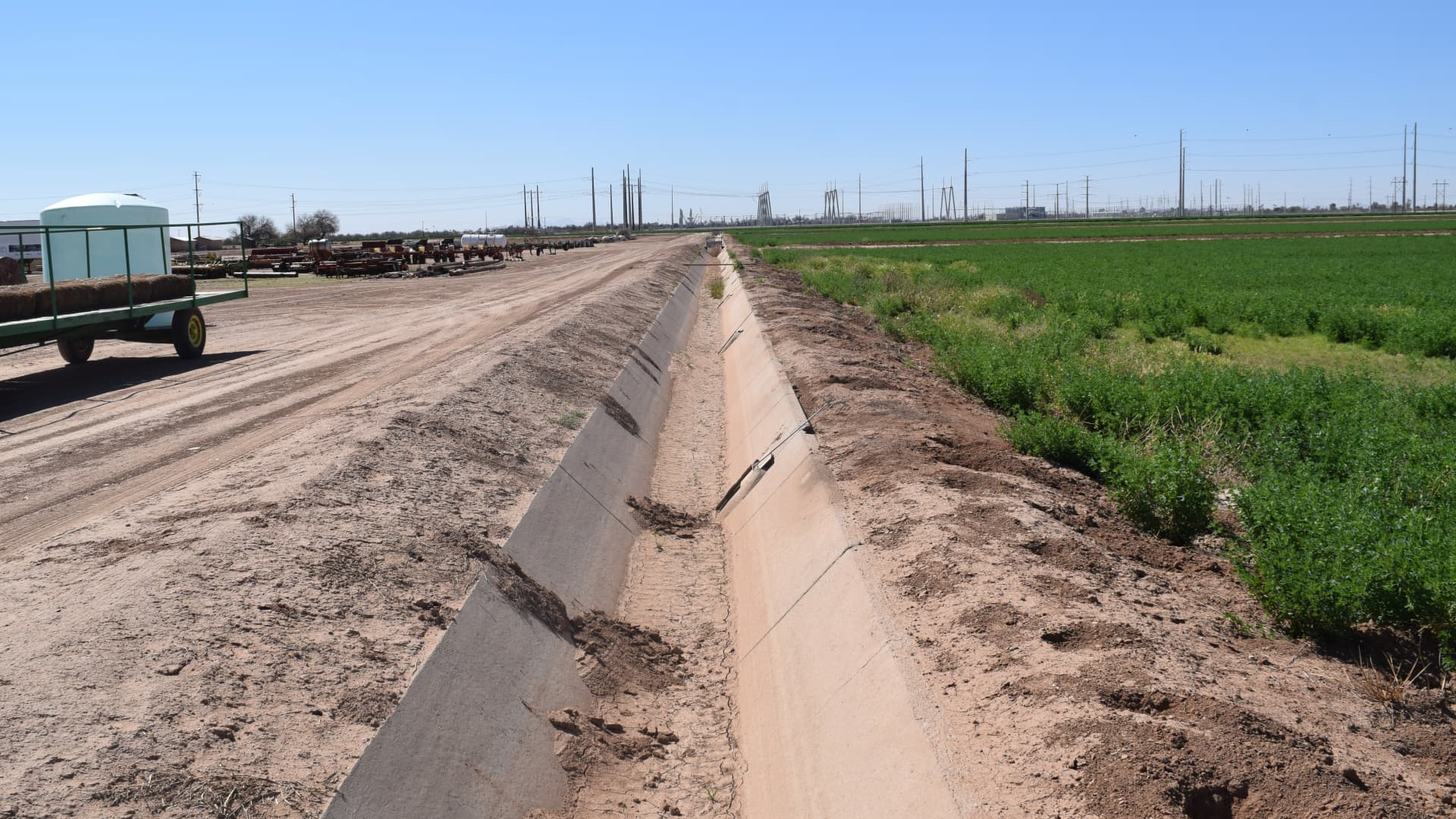
Driving through Casa Grande, a city of 55,000 people that's about halfway between Phoenix and Tucson, you'll see miles of unplanted land, dead cotton fields and dry canals.
Money Report
Farmers here fear additional water restrictions in the coming weeks as a warming climate continues to reduce the amount of water that typically fills the Colorado River from rainfall and melting snow.
The Bureau of Reclamation in August declared a water shortage at Lake Mead, one of the river's primary reservoirs, after water levels fell to historic lows. More than one-third of Arizona's water flows up the Colorado River to Lake Mead.
The government's declaration triggered Tier 1 water reductions, which slashed the state's river water supply by nearly 20%, or 512,000 acre-feet. One acre-foot of water supplies about two households each year.
Arizona farmers use nearly three-quarters of the available water supply to irrigate their crops. As supply runs low, some farmers in Pinal County couldn't afford to operate any longer and sold their land to solar developers. Others have left fields empty to cut down on water use, or have experimented with drought-resistant plants.

Then there are those who started pumping more groundwater, which raises additional concerns since Arizona's groundwater supplies are already overused.
When Caywood's grandfather signed the land in 1930, he was drawn in by cheap prices and technological developments that allowed for water to be transported from canals connected to the San Carlos reservoir more than 100 miles away.
Last year, the San Carlos reservoir plummeted to zero acre-feet.
"There's always a chance of rainwater, or some snow in the East," Caywood said. "We have to have hope. Or we throw our hands up and say, 'We're done.'"
Megadrought tests resilience of farmers
Arizona's climate doesn't have enough rain to grow most crops. Still, for thousands of years, the rivers and aquifers that hold groundwater have supported the state's now $23 billion agriculture industry.
Climate change and dwindling water supplies have wreaked havoc on the once prosperous farms that could endure the arid conditions. The U.S. West is now experiencing a megadrought that's generated the two driest decades in the region in at least 1,200 years. Scientists say 42% of the drought's severity can be attributed to human-caused climate change, and warn that conditions could persist for years.
The consequences are far-reaching. A prolonged drought will not just reduce local farm income in Arizona, but create tighter supply and increased food prices for consumers across the country.
Despite the brutal conditions, Caywood wants to continue the farming legacy of her parents, both of whom died last year. In an attempt to salvage her property, Nancy frequently conducts farm tours to educate people about the water crisis. Her son, Travis Hartman, has leased plots in other irrigation districts that currently have access to Colorado River water.
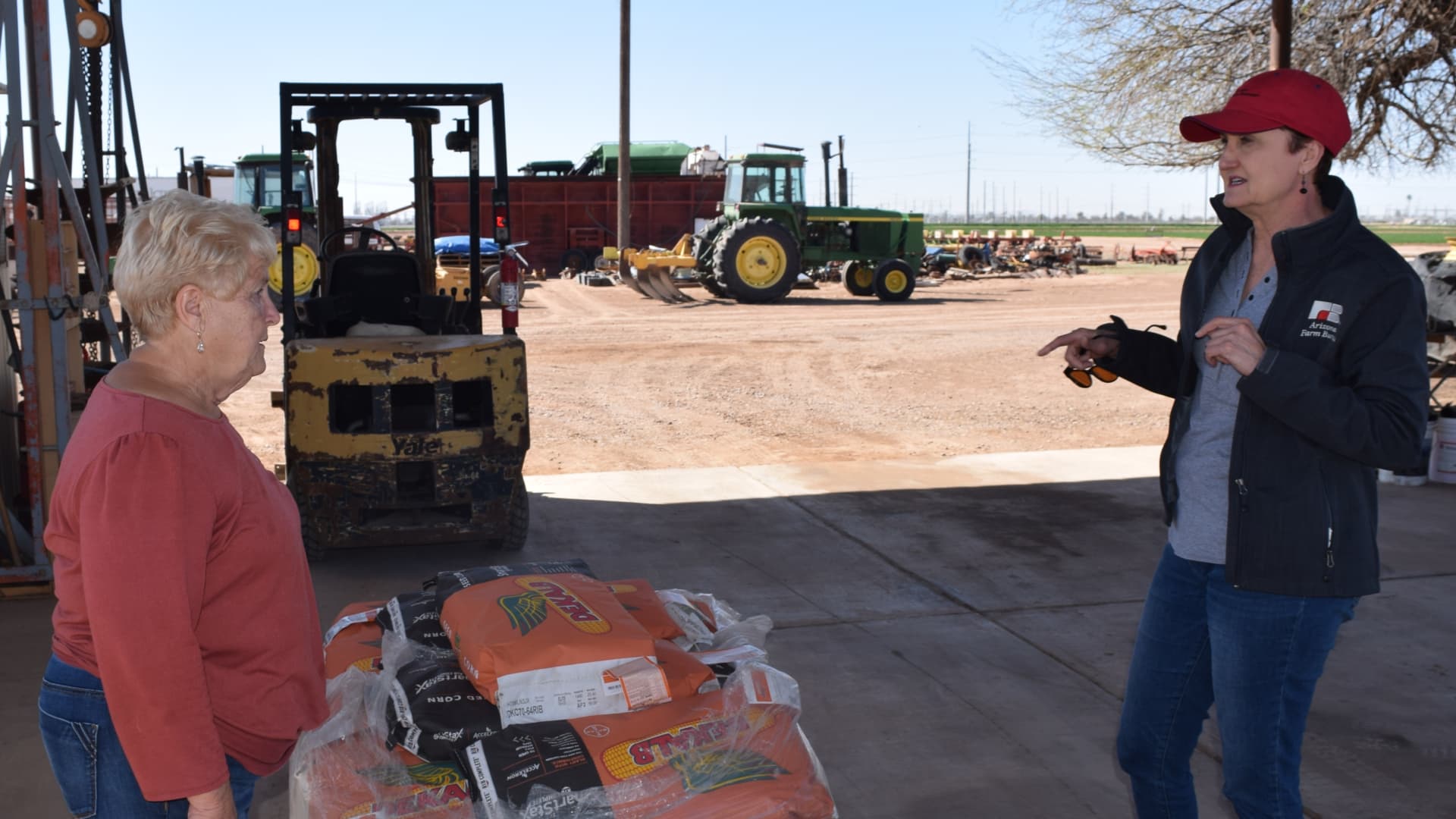
Caywood continues to plant as much as possible, but watches with unease as neighboring farmland is converted into solar panel developments. She estimates that her farm could shutter in three years as expenses mount and property taxes remain.
"You got costs for leveling the land, pairing the fields, buying seed, fertilizing — everything that goes into the crop," Caywood said. "Then, the question is, can we pay for the water and taxes? Probably not. Will we make ends meet? We don't know. It's very stressful."
One major concern is whether the Tier 1 water restrictions are enough to sustain reservoir levels as less water flows into the river. Reservoirs in the Colorado River Basin dropped to their lowest levels on record last year following 22 consecutive years of drought. In just five years, Lake Mead and Lake Powell, the river's two largest reservoirs, have lost 50% of their capacity.
Bradley Udall, a water and climate scientist at Colorado State University's Colorado Water Institute, is not shocked by the drop. After all, he said, scientists have been warning about declining reservoir levels in the West for at least four decades.
"The drop in reservoir contents is stunning, but it feels inevitable that we reached this point," Udall said. "It's super uncomfortable to say, 'We told you so,' but man — there's been a lot of science about this problem for a long time."
Hope for Arizona's agriculture
A half-hour away from the Caywood property, fourth-generation farmer Will Thelander is operating part of his family's 6,000 acres in Pinal County.
Thelander, who farms crops like corn, wheat, and alfalfa, lost half his water supply this year and is fallowing nearly half the land. He's stopped growing cotton, a particularly water-intensive crop, and has instead focused on crops that are less demanding.
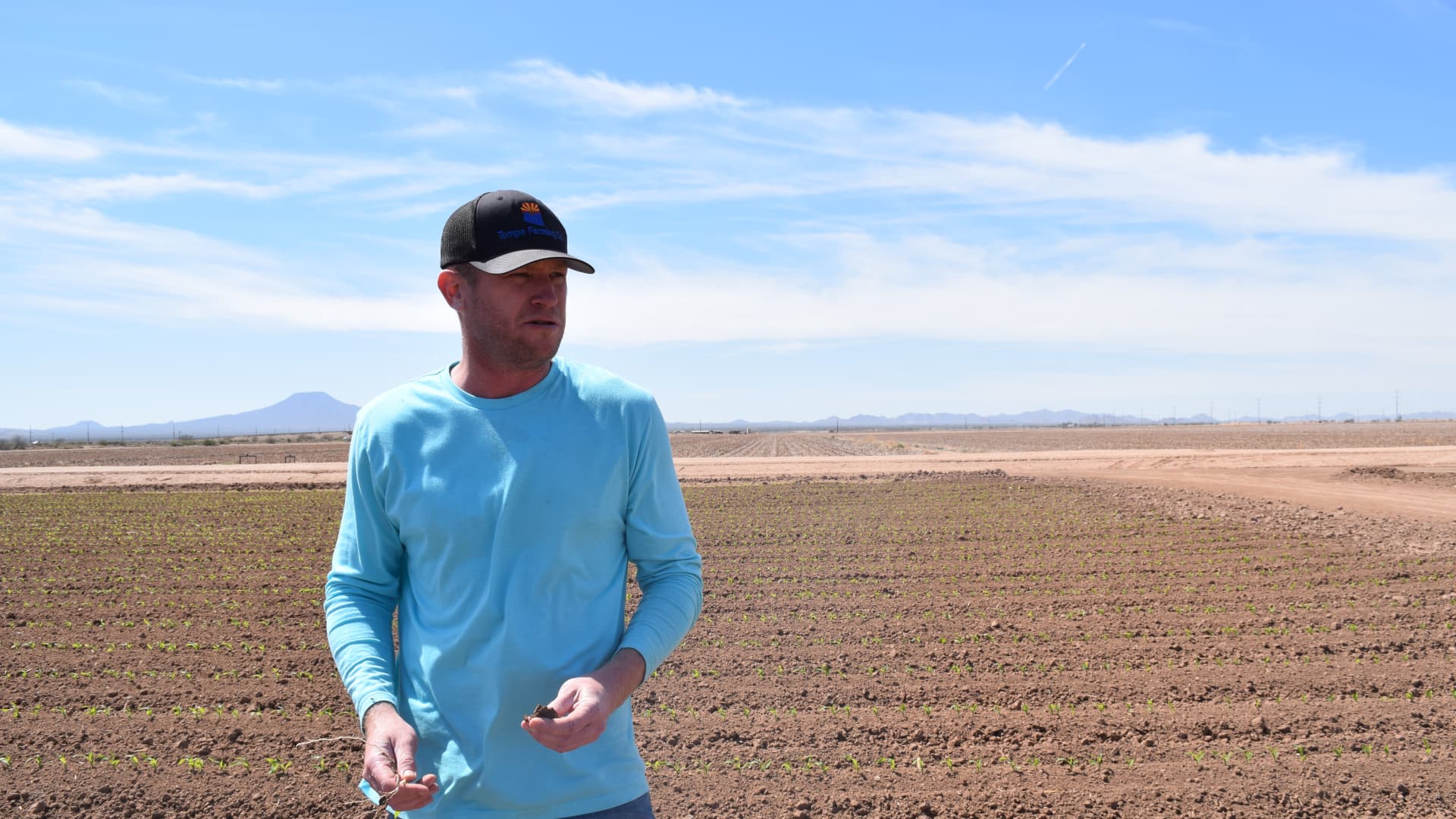
He doesn't expect the water shortage problem to improve, and warns that farmers will only be able to pump groundwater for so long until it runs out entirely.
Anticipating more water cuts, Thelander has placed all his hope in guayule, a drought-tolerant plant that can be harvested and used in rubber production. His farm, Tempe Farming Co., is participating in research for the tire company Bridgestone, which helped Thelander plant 25 acres of the crop in 2019.
Guayule uses half as much water as alfalfa and is harvested every two years. At a larger scale, it could conserve a lot of water. According to preliminary estimates, converting roughly 100,000 acres to guayule production in the area may conserve 150,000 acre-feet of water each year, representing 15% of Pinal County's agricultural water consumption.
"There's no way to make more water," Thelander said. "The only thing farmers can do is pivot, try new crops — do whatever they can."
"But not a lot of things like the desert," he added.
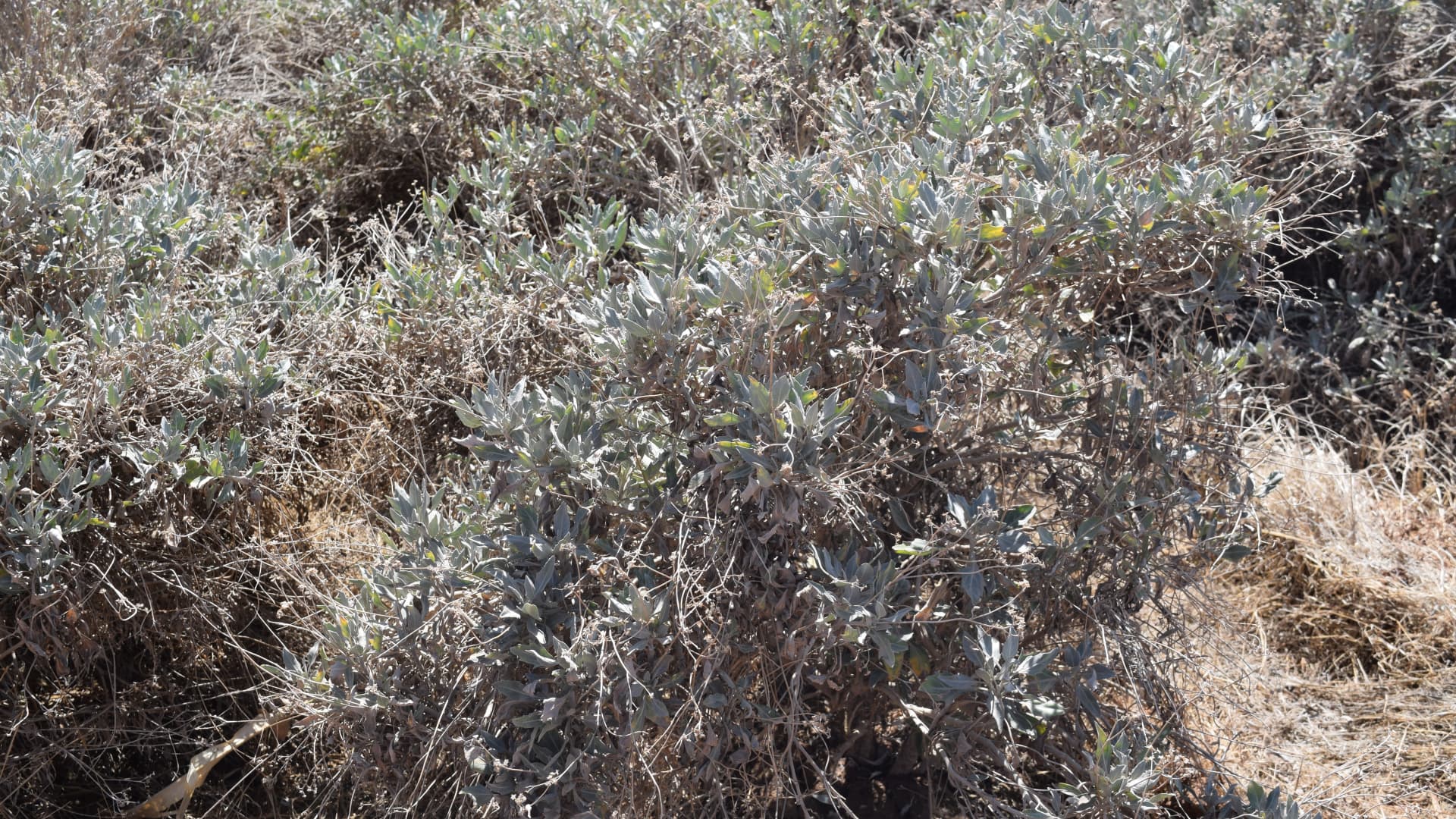
Thelander's farm experienced a 20% revenue loss this year, a smaller number than expected due to skyrocketing prices of supplies such as hay. While hopeful about guayule, which could potentially make up for his farm's revenue loss by 2026, Thelander is skeptical about the future of farming in Arizona.
"I tell people who want to farm to pick a different career," he said. "I hope everyone here can make it. But it's just not going to happen."
Arizona has turned to several options to access other water sources. The state is looking to import groundwater to Phoenix and Tucson from various parts of the state, and lease more water from Indian tribes with higher priority water rights.
Another state proposal involves producing fresh water by desalinating water from the Sea of Cortez, located roughly 50 miles across Mexico from Arizona's southern border. Some critics have condemned that plan as evading the need for water conservation.
Meanwhile, water leaders in Arizona, Nevada and California signed an agreement in December to slash their usage of Colorado River water in hopes to delay more cuts in the upcoming years. The plan, which is still being negotiated, requires states to cut 500,000 acre-feet in 2022 and 2023 and help fund water conservation projects.
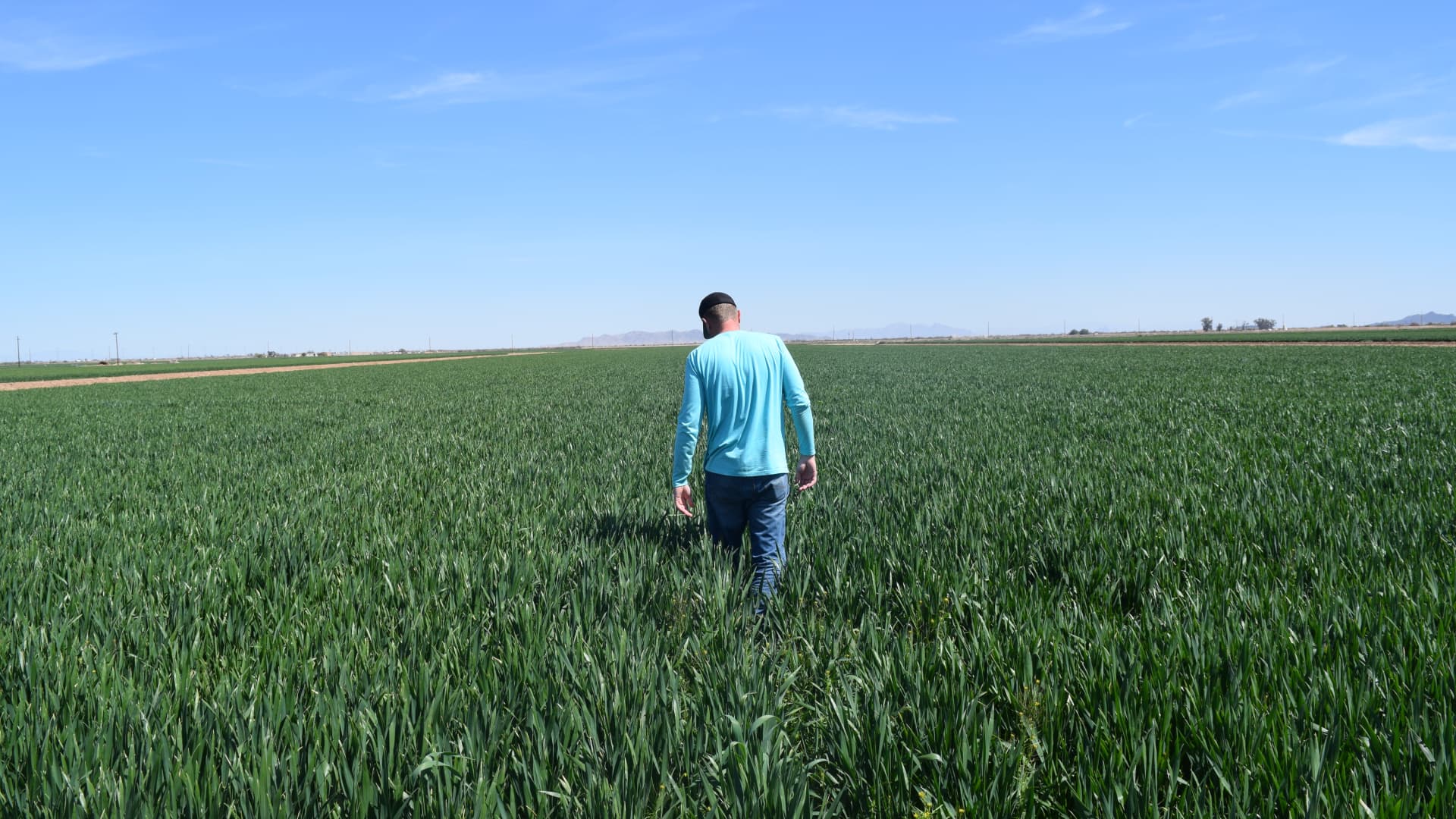
Phoenix, one of the hottest and driest regions of the country, draws a large amount of its water from the Colorado River. The city is set to voluntarily lose some river water under that plan.
Cynthia Campbell, Phoenix's water resource management adviser, said the department is discussing issues "we've never had to contemplate before" as reservoir levels decline.
"The American West is a canary in the coal mine for climate change," Campbell said, in a meeting at Phoenix City Hall. "These problems will start happening in other places too."
For Caywood, a major hope is that new infrastructure funding will go to updating aging wells and canals on her property.
President Joe Biden in November signed a bipartisan infrastructure bill that includes several billion dollars that could help Arizona farmers cope with the water crisis. The legislation has funding for western water projects that would improve infrastructure like watersheds and underground aquifers.
"We need to protect American farms. If we don't, we'll find ourselves cut off from food supply," Caywood said. "We all need water and we all need food. That's why we're fighting to stay in the game."
